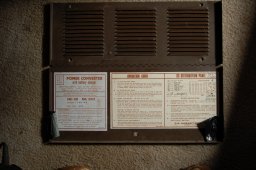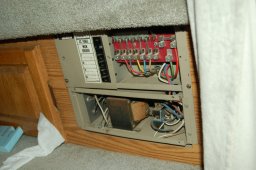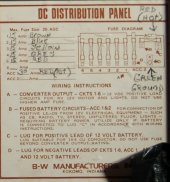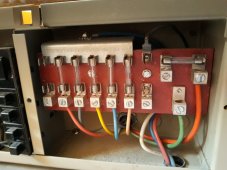aluchipawa
New Member
- Joined
- Oct 5, 2021
- Messages
- 35
Hi new friends.
I am getting together a solar system that I will be integrating into my RV's existing electrical system. I am putting the battery, inverter, and charge controller about 12-15 feet from the DC and AC Fuse boxes from the old system. The system consists of
206Ah Sok LiFePO battery
Giandel 2200W Inverter
2 Rich Solar 200W panels
Rich Solar 40A charge controller.
On the existing AC Panel there is an ATS between shore power and the generator. I am planning on disconnecting the generator from the original ATS and then adding an ATS Which will choose between the inverter and the gen and then connect that where the generator was connected in the original ATS (Hope that makes sense). So the inverter will need to connect to the new 30Amp ATS which is about 15 ft away. Would 8AWG wire be sufficient to connect the inverter to the new ATS?
Secondly, the existing DC fusebox has a 30A main fuse in the box itself. Being that this is also 15ft away would 8AWG wire be fine? I will have a 200A Fuse on the +lead from the battery where I will be connecting the inverter and the + that will go to the DC Fusebox.
For the main components I will be using 4AWG to connect the battery to inverter (Through the 200A Fuse), battery to a negative busbar, busbar to inverter and then will be using 6AWG wire from the Charge Controller to the battery. Is right with the components I have?
I know its a lot of questions but I really appreciate any help I can get since this will be my first solar setup. THANKS Y'ALL
I am getting together a solar system that I will be integrating into my RV's existing electrical system. I am putting the battery, inverter, and charge controller about 12-15 feet from the DC and AC Fuse boxes from the old system. The system consists of
206Ah Sok LiFePO battery
Giandel 2200W Inverter
2 Rich Solar 200W panels
Rich Solar 40A charge controller.
On the existing AC Panel there is an ATS between shore power and the generator. I am planning on disconnecting the generator from the original ATS and then adding an ATS Which will choose between the inverter and the gen and then connect that where the generator was connected in the original ATS (Hope that makes sense). So the inverter will need to connect to the new 30Amp ATS which is about 15 ft away. Would 8AWG wire be sufficient to connect the inverter to the new ATS?
Secondly, the existing DC fusebox has a 30A main fuse in the box itself. Being that this is also 15ft away would 8AWG wire be fine? I will have a 200A Fuse on the +lead from the battery where I will be connecting the inverter and the + that will go to the DC Fusebox.
For the main components I will be using 4AWG to connect the battery to inverter (Through the 200A Fuse), battery to a negative busbar, busbar to inverter and then will be using 6AWG wire from the Charge Controller to the battery. Is right with the components I have?
I know its a lot of questions but I really appreciate any help I can get since this will be my first solar setup. THANKS Y'ALL






